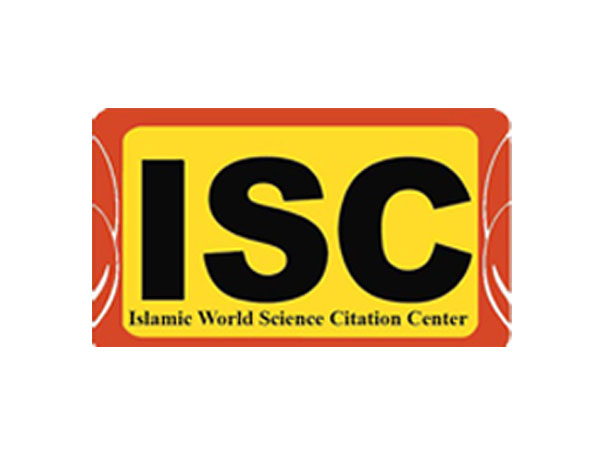About the journal
This Journal abiding by the rules of ethics publications are subject to the rules of the Committee on Publication Ethics “COPE”, and complies with the highest ethical standards in accordance with ethical rules, also obeys executive regulations of the Law on Prevention and Combating Fraud in Scientific Works.
Based on the letter No. 50260/S dated 17/07/1403 of the Director General of Libraries, Journals, Scientific Publications and Scientometrics of Islamic Azad University, the costs of refereeing and publishing scientific articles have been determined in the range of 5,000,000 to 10,000,000 Rials for the first payment (refereeing fee) and 10,000,000 to 20,000,000 Rials for the second payment (publication fee). Therefore, from the date of the above letter, based on the decision of the publication authorities, it was decided that in order to publish an article in the scientific journal "Mystical and Mythological Literature", authors are required to pay 5,000,000 Rials for refereeing fees and 15,000,000 Rials for publication fees. Obviously, publishing articles is subject to online payment of the above fees through the integrated financial portal of the Sindh System publications.

Access to articles from this site is free.
-
Open Access Article
1 - The Symbolic and Mythological Dimensions of Sacred Food and Drink in Mystical Initiation: With a Focus on Rūzbehān Baqlī’s Kashf al-Asrār
Hāshem Allāhyāri ، Mohammad Tāheri * ، Majid MansooriIssue 80 , Vol. 21 , Autumn 2025 -
Open Access Article
2 - A Comparative Mythological Analysis of Gopatshah –Aghrirat with Ganesha and Isis
Ali Amini * ، Mohsen MahmoodiIssue 80 , Vol. 21 , Autumn 2025 -
Open Access Article
3 - A Comparative Analysis of the Myths of Jamshid and Mithra and Their Connection with the Sun Within the Framework of Eliade’s and Jung’s Theories
Fātemeh Savāb *Issue 80 , Vol. 21 , Autumn 2025 -
Open Access Article
4 - An Analytical Study of the Story of Moses and the Shepherd Based on Glasser’s Choice Theory
Ānāhitā Chitgarzādeh ، Nozhat Noohi * ، Tooraj Aghdāie ، Hosein ĀrianIssue 80 , Vol. 21 , Autumn 2025 -
Open Access Article
5 - The Relationship Between Shāhed-bāzī in the Poems of Prominent Persian Poets and Virtual Love inPlato’s Symposium
Mohammad-Mahdi Dehghānizādeh * ، Mohammad RazmgahIssue 80 , Vol. 21 , Autumn 2025 -
Open Access Article
6 - A Comparative Discussion on Mahanta and Pir in the Eckankar School and Islamic Mysticism
Fātemeh Hooshangi Cheqāmārāti ، Mohammad-Ebrāhim Mālmir * ، Mojtabā BeiglariIssue 80 , Vol. 21 , Autumn 2025
-
Open Access Article
1 - The Influence of Intertextuality in the Novel 'Suvashun' on Audience Engagement During Reading
Esmaeel BANIARDALAN ، Shahrokh Amirian Doost *Issue 75 , Vol. 20 , Summer 2024 -
Open Access Article
2 - The Transformation of a Myth: Rostam-e Dastān
محمود رضایی دشت ارژنهIssue 17 , Vol. 5 , Winter 2009 -
Open Access Article
3 - Two Theories about the Story of Siyāvash; Based on the Views of Tajik, Russian and Iranian Scholars of Shahnāmeh
nasrin bazgirIssue 39 , Vol. 11 , Autumn 2015 -
Open Access Article
4 - “Anthropos Teleios” From Ibn Arabi’s Point of View
Morteza ShajariIssue 2 , Vol. 2 , Spring 2017 -
Open Access Article
5 - The Discourse of Mythological Resistance in the Story of Siāvash; A Semantic and Semiotic Analysis
Ebrāhim Kanāni *Issue 56 , Vol. 15 , Winter 2019 -
Open Access Article
6 - Awareness of Death in the Story of Mattie and Grandpa
Narges Bāgheri ، Sharooz HamidiIssue 40 , Vol. 11 , Winter 2015 -
Open Access Article
7 - The Methods of Storytelling in Qur'an and Their Influence on Masnavi Manavi: Prologues and the Methods of Narrative
Hossein FaālArāghinezād ، Soheilā Mousavi Sirjāni *Issue 62 , Vol. 17 , Spring 2021 -
Open Access Article
8 - Taboo-Breaking in the Story of Sheikh Sanān; An Analysis Based on Jung's Theory
Mohammad Ahi * ، Elyas GhaderiIssue 66 , Vol. 18 , Spring 2023 -
Open Access Article
9 - Gordiya of Shāhnāmeh and Athena of Iliad: An Exploratory Comparison
Aghdas Fātehi * ، Fatemeh HajirahimiIssue 74 , Vol. 20 , Spring 2024 -
Open Access Article
10 - Recognizing the Position of Imagination in Architecture Based on Masnavi Manavi
Reihāneh Nikravesh * ، Zhāleh SābernejādIssue 56 , Vol. 15 , Winter 2019









